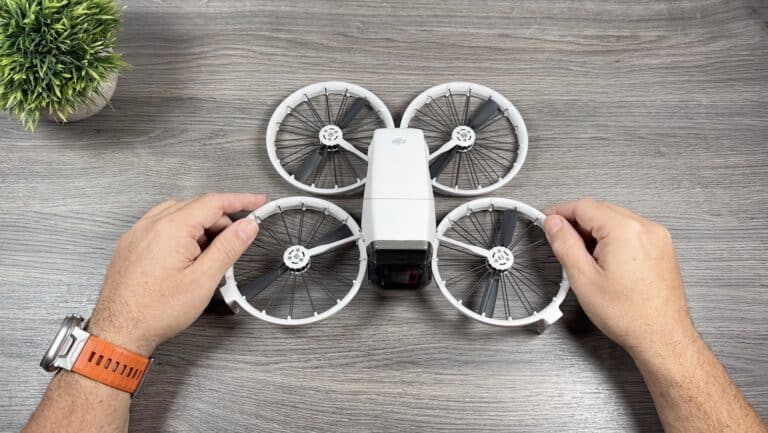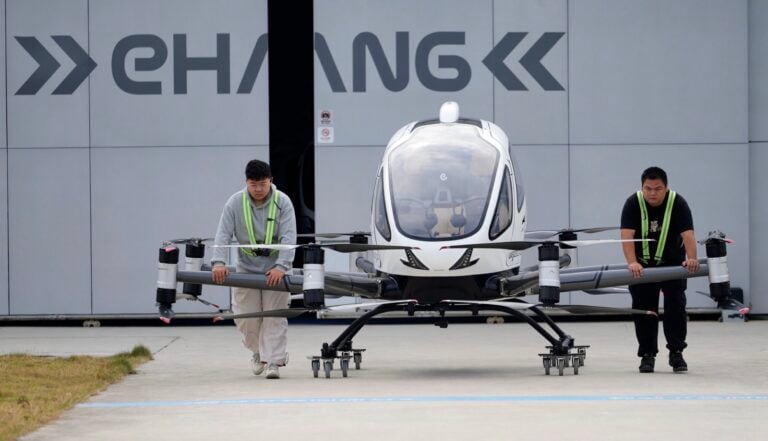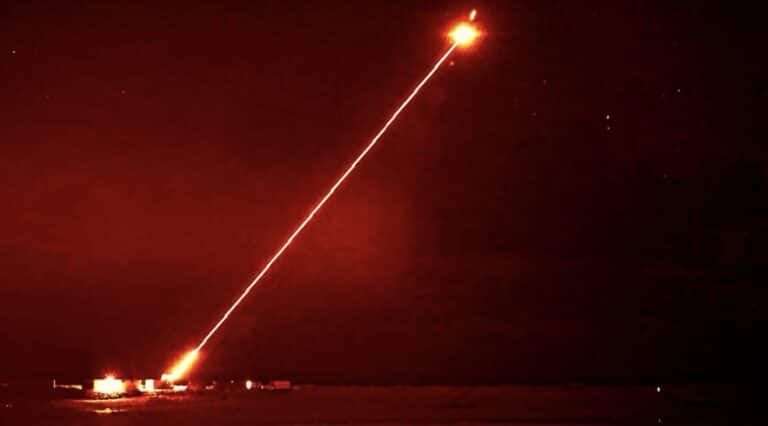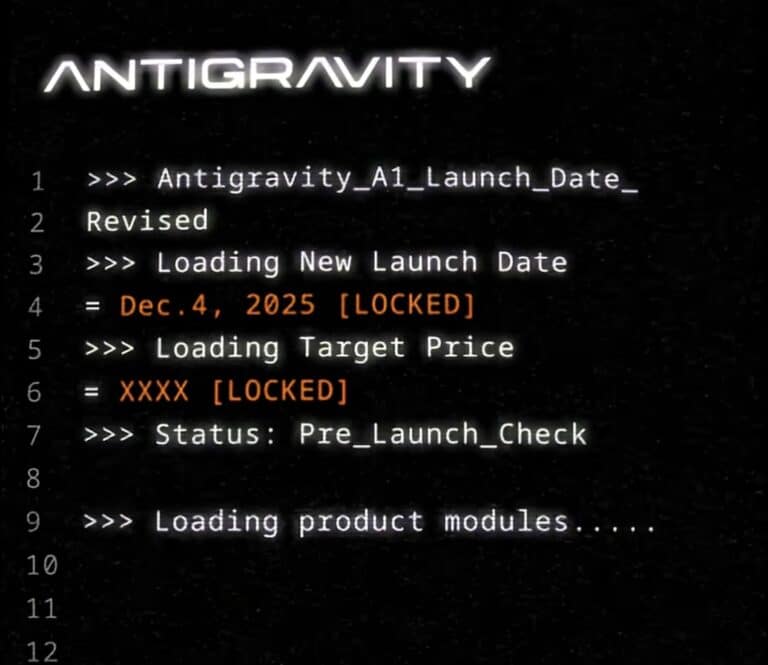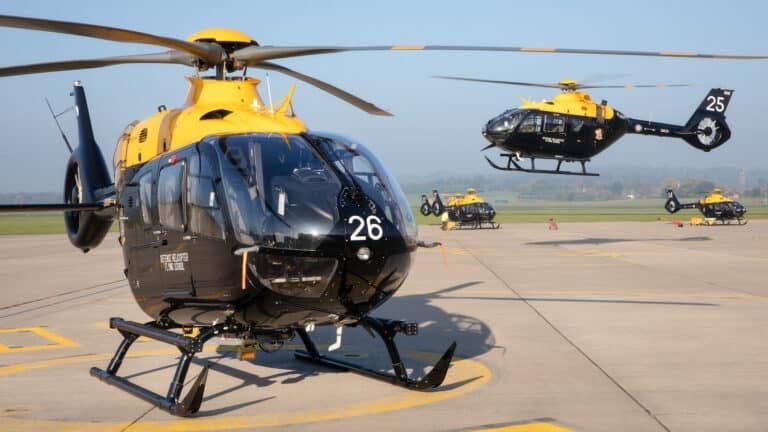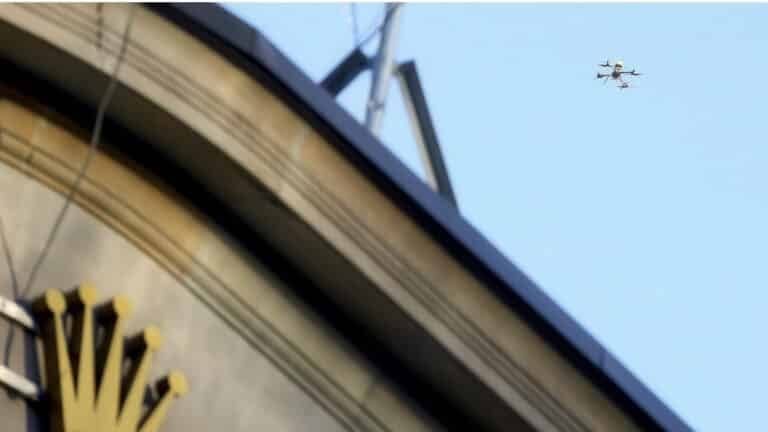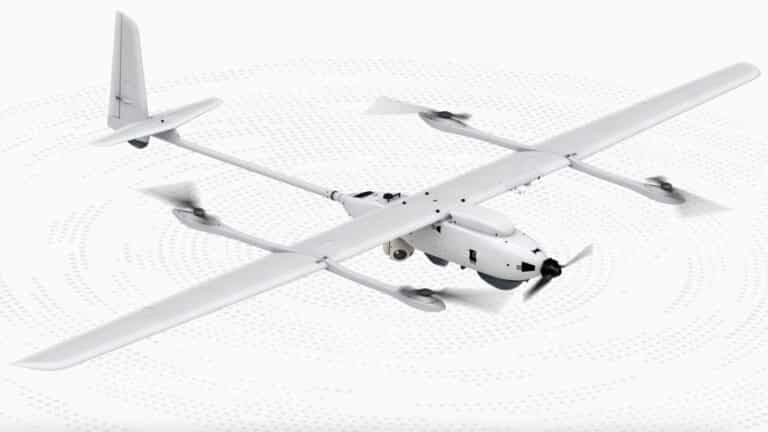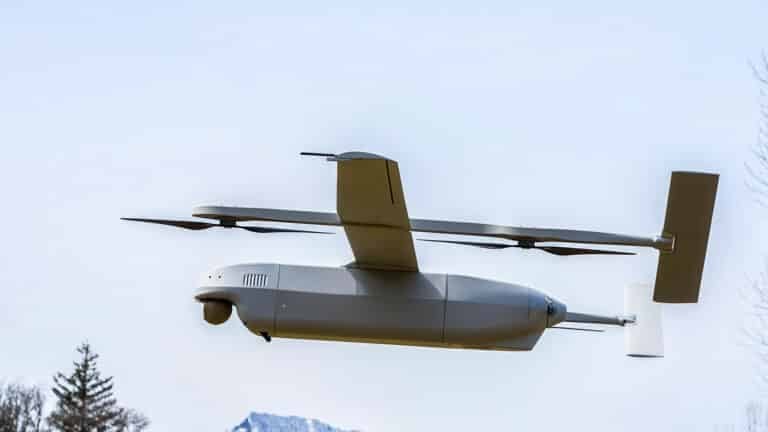Meet ALPAGU: Turkey’s Backpack Kamikaze Drone That Wants To Crash The Party
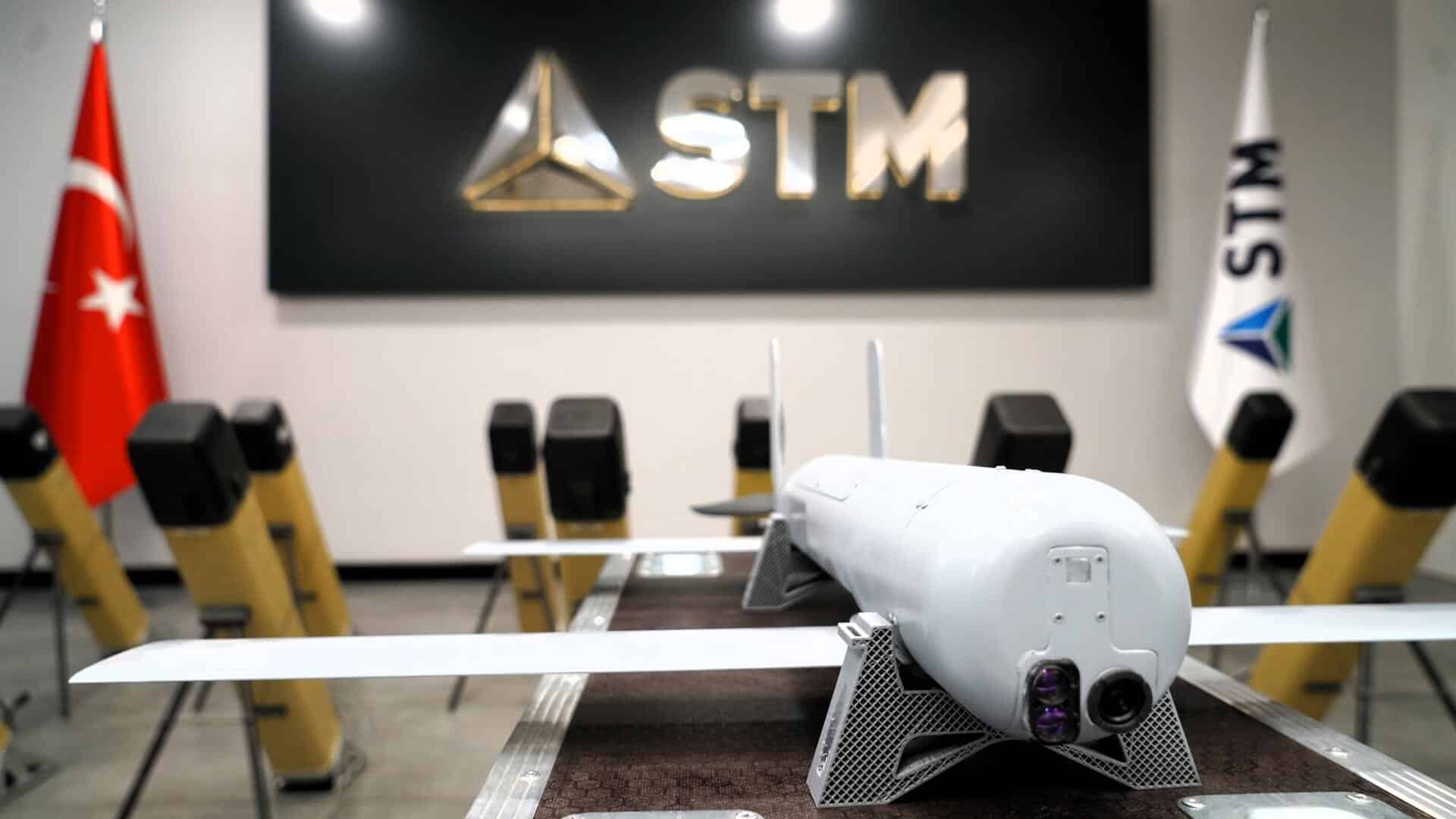
Turkey’s drone industry has already turned heads with the Baykar Bayraktar TB2, and the Kizilelma “Red Apple” Unmanned Aircraft Systems (UAS). Now it is pushing firepower even closer to the front line with ALPAGU, a tiny, portable kamikaze drone that fits in a backpack and ends its mission by slamming into its target.
If the TB2 is the celebrity of Turkish drones, ALPAGU is the quiet nerd in the back of the class that nobody is paying attention to yet.
What ALPAGU Actually Is
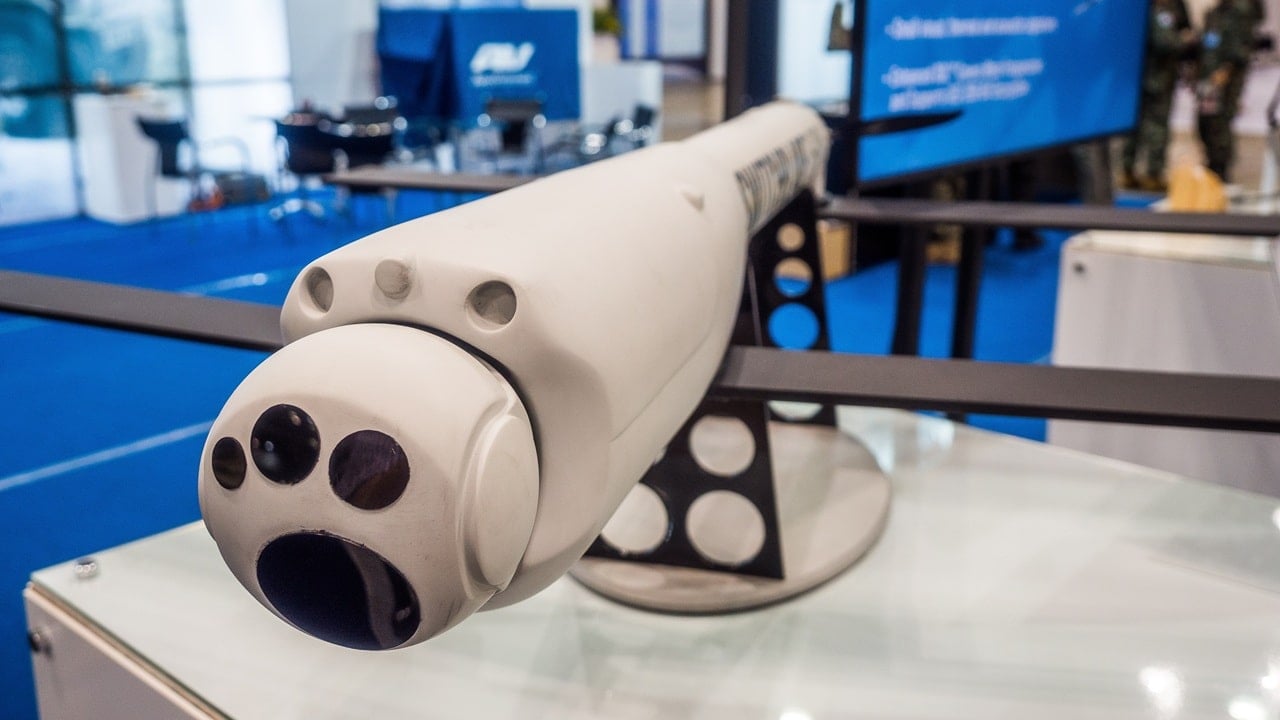
ALPAGU is a fixed-wing loitering munition built by Turkish defense company STM. It is tube-launched, weighs just under 2 kilograms (4.4 pounds), and is designed to be carried and deployed by a single soldier.
It launches from a small tube, deploys its wings in flight, and immediately starts climbing and hunting.
The whole system is designed to be used by one operator. A single soldier carries the Ground Control Unit (GCU), in this case a tablet, and the launch tube. Once ALPAGU is in the air, it’s able to transmit a live video feed back to the controller so the operator can scan rooftops, tree lines, or other terrain before committing to a target.
ALPAGU’s entire pitch could be as summed up in three words: cheap, lethal, and easy (to make!).

Key Specs in Plain English
On paper, ALPAGU lives in the “flying guided grenade” category.
It weighs just under 2 kilograms (roughly 4.4 pounds) total, with approximately a 270 gram (about 0.6 pound) explosive warhead on the nose. You get around 15 minutes of flight time and a usable range of about 8 kilometers (5 miles), typically flying between 80 and 200 meters (about 260 to 660 feet) above the ground.
An electro-optical and infrared sensor in the nose handles spotting. Onboard processing helps with image stabilization and target recognition, but a human stays “behind the wheel” to pick the final target and authorize the dive.
It is not trying to be a deep-strike or stealth weapon. ALPAGU exists to handle the threats you can see on the horizon right now.
Where it Fits Next To Bayraktar TB2

Turkey’s most famous drone, the Bayraktar TB2, plays in a different weight class entirely. TB2 is a medium-altitude, long-endurance platform that can loiter for more than a day, carry smart munitions, and feed live information back to a command center hundreds of kilometers/miles away.
You can think of the split like this:
- TB2 and its cousins watch wide areas, coordinate artillery, and hit high-value targets with guided bombs.
- ALPAGU rides with the squad, launches from a rooftop or hill, and dives on a single machine-gun nest, pickup truck, or air defense crew the team just spotted.
Turkey’s currently building its own UAS ecosystem, and it’s layered to accomodate many different type of drones. On the top you have systems like Kizilelma, in the middle you have TB2/3, and at the grunt-level, you now have kamikaze drones like ALPAGU that live in backpacks instead of hangars.
The Competition: Switchblade, Hero-30, And Friends
The AeroVironment Switchblade 300 gives US and Ukranian troops a small, tube-launched loitering munition in a similar weight class, with roughly 20 or more minutes of endurance and longer range. The UVision Hero-30 is heavier and carries a larger warhead, trading portability for added punch.
Turkey has turned drones into a major export tool, and the same government backing the TB2’s success is now positioning loitering munitions as part of the package. For countries already buying Turkish drones, “add a few crates of ALPAGU tubes” is an easy upsell.
If you have been following our coverage of loitering munitions like Ukraine’s Stick M12 kamikaze drone or France’s high-speed Veloce 330, ALPAGU fits right into that same category of semi-disposable precision drones.
How ALPAGU Will Be Used, and Why it Matters
On the battlefield, ALPAGU is basically a guided flying grenade with patience.
You can picture it being used to pick off a machine-gun position on a ridgeline, a sniper nest in an apartment window, or an air-defense crew that just rolled a MANPADS launcher out from cover. Border security units and special operations teams can fire it from rough terrain, watch an area for several minutes, and then send it in when the right target appears.
Because it is small and flies relatively low, ALPAGU is harder to detect than a larger UAV, and cheap enough that losing one is not a major event.
Zooming out, this is exactly where modern warfare is heading. We are already seeing cheap kamikaze drones shape fights in Ukraine, Sudan, and the Middle East.
ALPAGU is Turkey’s answer at the smallest scale: give every squad a tube, give them a tablet, and suddenly they have their own portable air support.
DroneXL’s Take
In my aviation and drone technology classroom, students are usually between 15 and 18 years old. They learn to fly drones for roof inspections, for sport, for photography and mapping, and for future enterprise work. A good chunk of them just want to chase FPV gates or shoot cinematic footage on a Mavic.
At the same time, roughly a third of the class has an eye on the U.S. armed forces. Some want to be infantry, some want to work on aircraft, and some are already asking questions about what kind of drones they might see if they end up deployed.
That is where systems like ALPAGU become more than just “cool tech” in a news headline. For students who plan to serve, understanding how loitering munitions work, where they come from, and how they are used on the battlefield is part of being better prepared for the reality they could walk into. These are not abstract gadgets. They are tools that can decide who survives an engagement.
For the other two-thirds who are not interested in anything military, the technology packed into ALPAGU is still wild. You are talking about a sub-2 kilogram airframe with folding wings, stabilized optics, onboard processing, encrypted datalink, and a precise terminal guidance package, all riding on a soldier’s back. The same design lessons that make a lethal loitering munition possible also filter into safer collision-avoidance, smarter mapping workflows, and more capable small UAVs on the civilian side.
So yes, ALPAGU is built as a weapon. But it is also a very clear window into where small-drone technology is going next, and why the next generation of pilots, engineers, and soldiers needs to understand it instead of ignoring it.
Discover more from DroneXL.co
Subscribe to get the latest posts sent to your email.
Check out our Classic Line of T-Shirts, Polos, Hoodies and more in our new store today!

MAKE YOUR VOICE HEARD
Proposed legislation threatens your ability to use drones for fun, work, and safety. The Drone Advocacy Alliance is fighting to ensure your voice is heard in these critical policy discussions.Join us and tell your elected officials to protect your right to fly.
Get your Part 107 Certificate
Pass the Part 107 test and take to the skies with the Pilot Institute. We have helped thousands of people become airplane and commercial drone pilots. Our courses are designed by industry experts to help you pass FAA tests and achieve your dreams.

Copyright © DroneXL.co 2025. All rights reserved. The content, images, and intellectual property on this website are protected by copyright law. Reproduction or distribution of any material without prior written permission from DroneXL.co is strictly prohibited. For permissions and inquiries, please contact us first. DroneXL.co is a proud partner of the Drone Advocacy Alliance. Be sure to check out DroneXL's sister site, EVXL.co, for all the latest news on electric vehicles.
FTC: DroneXL.co is an Amazon Associate and uses affiliate links that can generate income from qualifying purchases. We do not sell, share, rent out, or spam your email.






